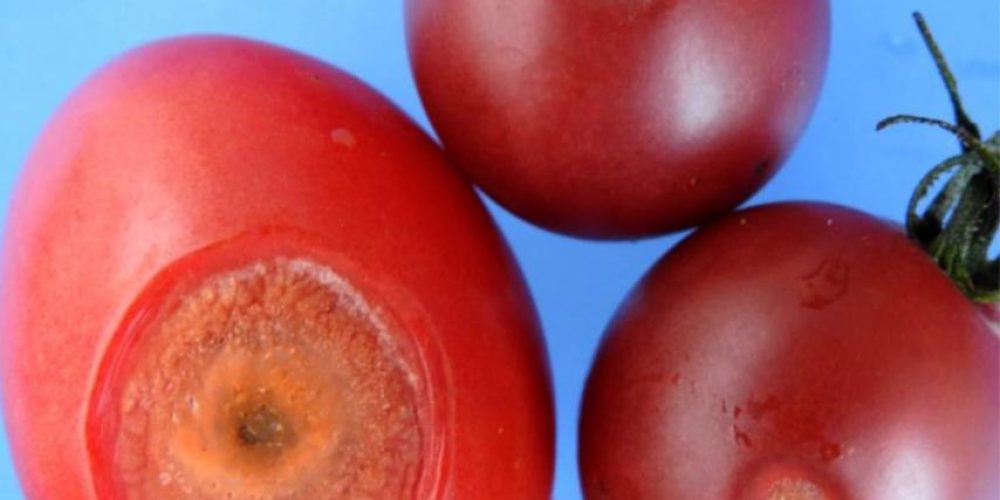Table of contents of the article
ToggleAnthracnose in tomatoes is a disease that leads to significant crop losses. In this article on your website, World of Plants, we discuss the symptoms of the disease and how to prevent it.
Suitable conditions for anthracnose in tomatoes
- High humidity more than 90%
- Temperature ranges between 20-30 degrees Celsius.
- Increased irrigation rates and increased rainfall.
- The presence of wounds caused by insects.
Cause of anthracnose in tomatoes
Causative agent: Colletotrichum coccoids fungus
Symptoms are caused by several types of fungi of the genus Colletrichum. They also live in the soil, attached to seeds, or on plant debris and alternative hosts for up to four years. There are two ways in which the infection is transmitted to new plants. Primary infections occur when soil-borne spores infect seeds and seedlings as they grow, and grow systematically in tissues. In other cases, the spores burst and the fungus is sprayed onto the lower leaves by raindrops and initiates an infection that spreads upward. Secondary infection begins when spores produced within leaf spots or fruits are spread by rain, dew, sucking insects, or field workers to the upper parts of the plant or other plants. The growth of the pathogenic fungus is promoted by cool to warm temperatures (20) to 30°C, soil with high pH, prolonged leaf moisture, frequent rainfall and dense Fayoum. But balanced fertilization makes crops less susceptible to anthracnose.
Symptoms of anthracnose in tomatoes:
The incidence of the disease increases in cases where vegetative growth is weak and in early varieties.
The fungus infects all aerial plant parts
However, the symptoms appear clearly on ripe fruits, which appear in the form of small circular spots with a watery appearance
They quickly turn dark brown in color and become noticeably sunken.
In these spots, very small dots appear arranged in rings surrounding each other around one center. As the spots increase in area, their center becomes dark black in color as a result of the fungal growths that form.
Directly under the skin of the fruit, the infection progresses rapidly inside the fruit in hot weather, leading to its rotting. Pink or orange-colored fungus spores appear in the center of the spots in humid weather.
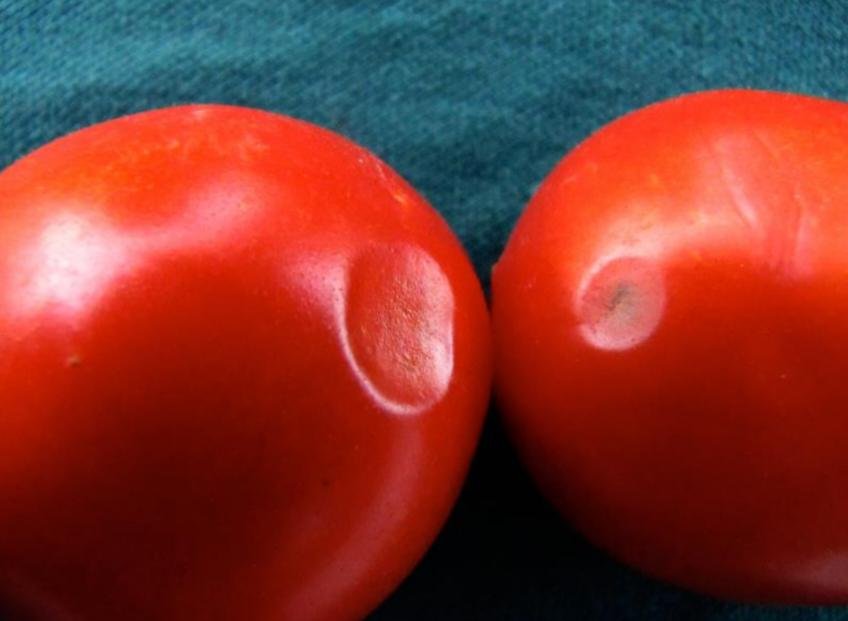
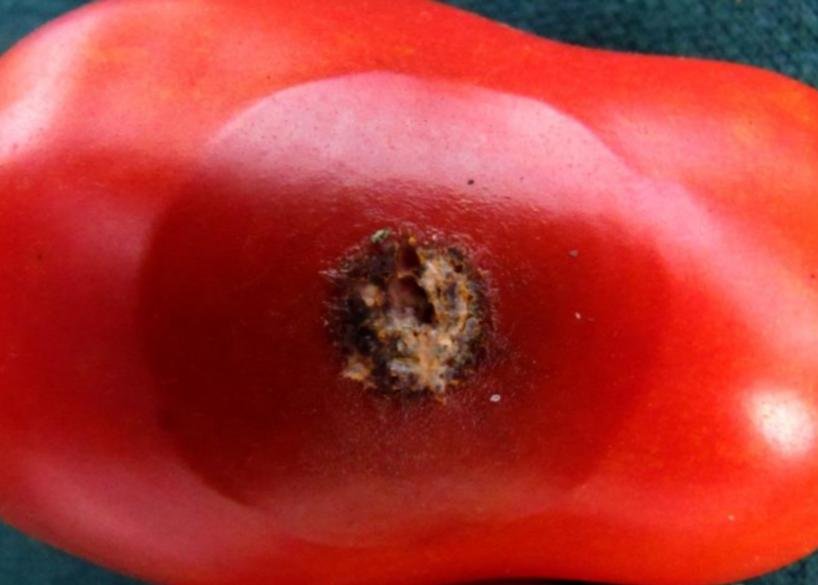 د
د
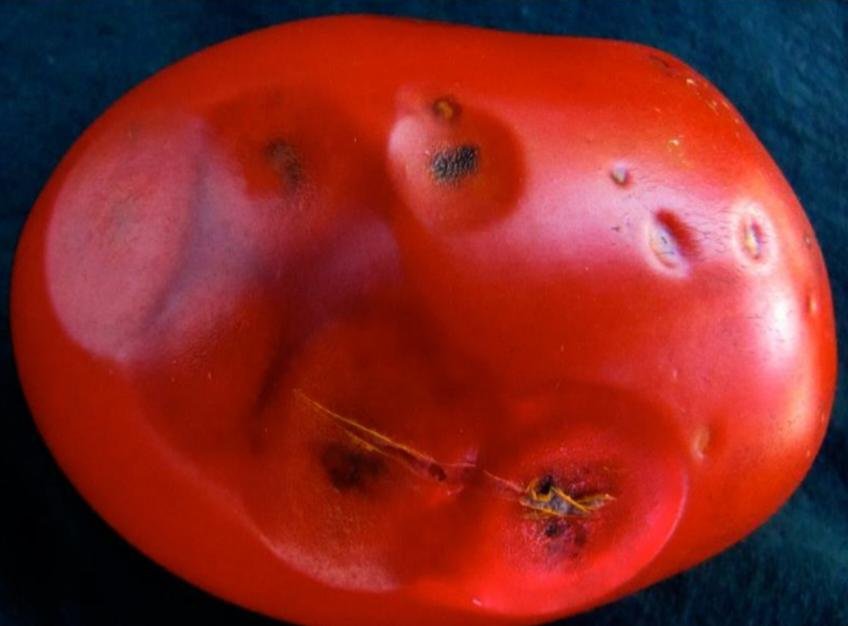
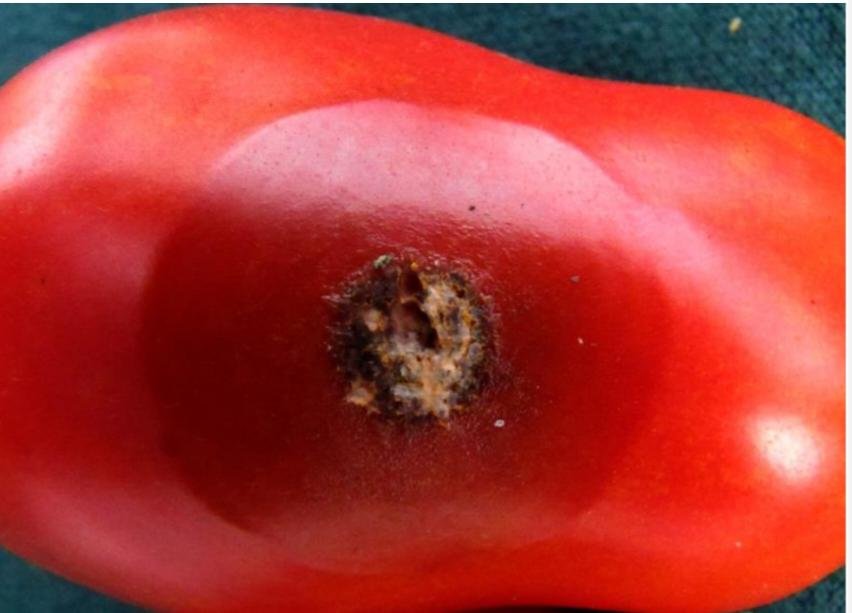 ن
ن
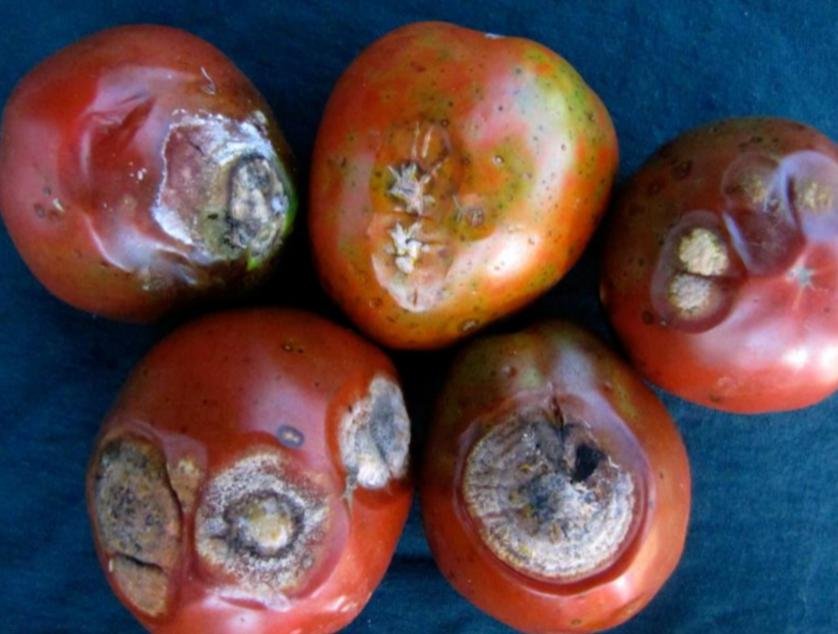
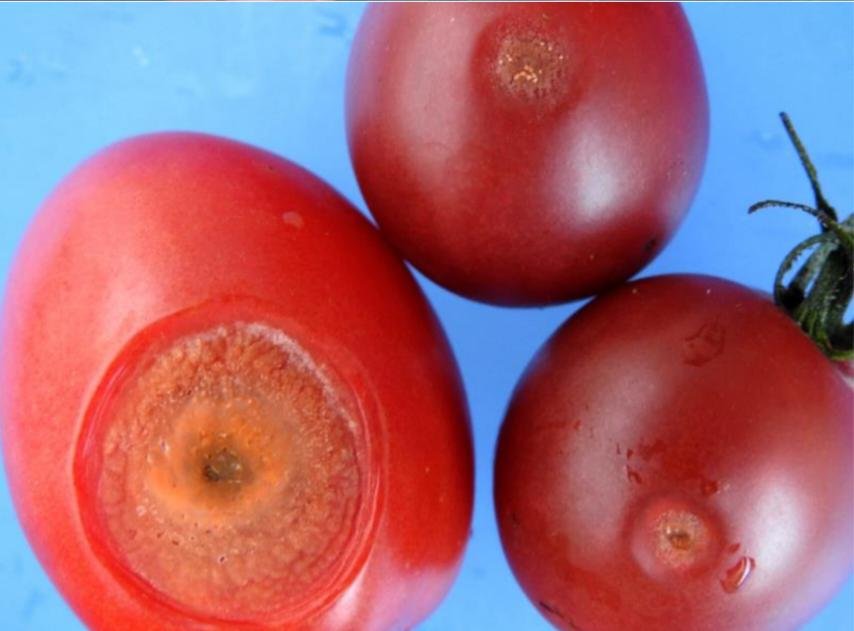 ن
ن
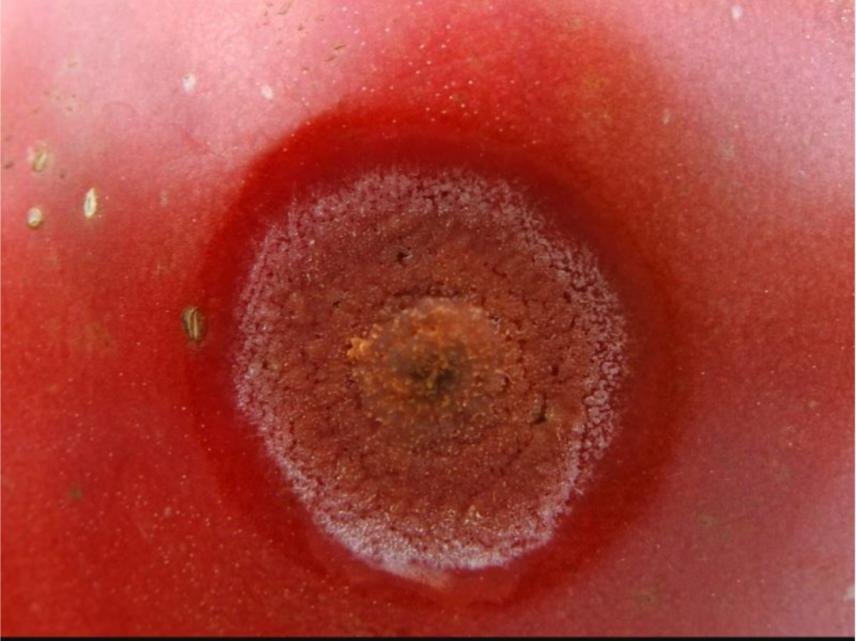
Resistance against anthracnose in tomatoes
- Soil sterilization in protected crops
- Follow a four-way agricultural cycle
- Use seeds free of infection or treated with heat or fungal disinfectants
Organic control against anthracnose in tomatoes
The spread of the disease can be prevented by immersing the seeds in a warm water bath before sowing (temperature and time depend on the crop). Neem oil can also be sprayed. Biological agents may also help control the infection.
Products based on the fungi Trichoderma harzianum, Pseudomonas fluorescens, Bacillus subtilis or Bacillus firmicus can also be used as part of seed treatment. Organically approved copper formulations can be sprayed against this disease on a variety of crops as soon as symptoms are detected.
Chemical control against anthracnose in tomatoes
Always consider an integrated approach with preventive measures together with biological treatments if available
- Spray early in the morning, avoid spraying during hot weather, and treat the seeds before planting.
- Seed drenching can be used to kill the fungus before sowing.
- Fungicides containing azoxystrobin, boscalid, chlorothalonil, manib, mancozeb, or prothioconazole can be applied prophylactically to reduce the risk of infection (please check the specific formulation and recommendations for your crop)
- Some cases of resistance to some of these products have been described in some crops, where effective treatments are not available.
- Some cases of resistance to some of these products have been described in some crops, where effective treatments are not available.
- Preventative measurements
- Plant highly resistant plants or buy healthy transplants, and keep more space between plants when sowing.
- You should also monitor fields or orchards for signs of disease.
- Remove weeds and plants in the field and surrounding area. Create a substrate with taller plants such as tomatoes to improve air circulation around the leaves and trunks.
- Also plant trap crops or trees around the fields.
- Maintain good soil cleanliness in the field or orchard by removing plant debris, for example.
- Avoid moving machinery or workers in the fields when the foliage is wet.
- Clean your tools and equipment carefully.
- To avoid the spread of disease, stay out of fields when plants are wet and be sure to disinfect all farm tools after use with a ratio of 1 part bleach to 4 parts water. If watering is necessary, plan it in the early morning and make sure foliage is dry before dark.
- Water plants using a drip sprinkler rather than an overhead spray
- Do not touch plants while they are still wet.
- Harvesting must also begin early to avoid the worst symptoms.
Gardener tips for preventing anthracnose in tomatoes
One preventive measure against anthracnose in tomatoes is timely harvesting. How do you determine the ripeness of tomatoes? Sensory ripening is the period when star-shaped erythema appears in the upper part of the fetus. In areas with high humidity, many gardeners prefer anthracnose-resistant varieties: LSL hybrids F1 Life, Shelf, Longf. Before planting, you can soak the seeds in drug solutions “Agat-25” (7 g / 1 kg) or “Immunogen” (2 ml / 1 kg). During the growing season, it is recommended to spray with “Novosil”, and at the time when 2-3 leaves appear – “Agatom-25” (14 grams of the product is required per 1 hectare). For prevention, use the drugs “Quadris”, “Strobi” and 1% solution of Bordeaux mixture
In conclusion, we would like to note that we, at the world of plants website, offer you all the necessary services in the world of plants, we provide all farmers and those interested in plants with three main services::-
- Artificial intelligence consulting service to help you identify diseases that affect plants and how to deal with them.
- Blog about plants, plant diseases and care of various crops ... You are currently browsing one of her articles right now.
- An application that provides agricultural consultations to clients, as well as a service for imaging diseases and knowing their treatment for free – Click to download the Android version from Google Play Store، Click to download the IOS version from the Apple App Store.
the reviewer :
Anthracnose disease - plantix
Anthracnose on tomatoes - al-hakem




